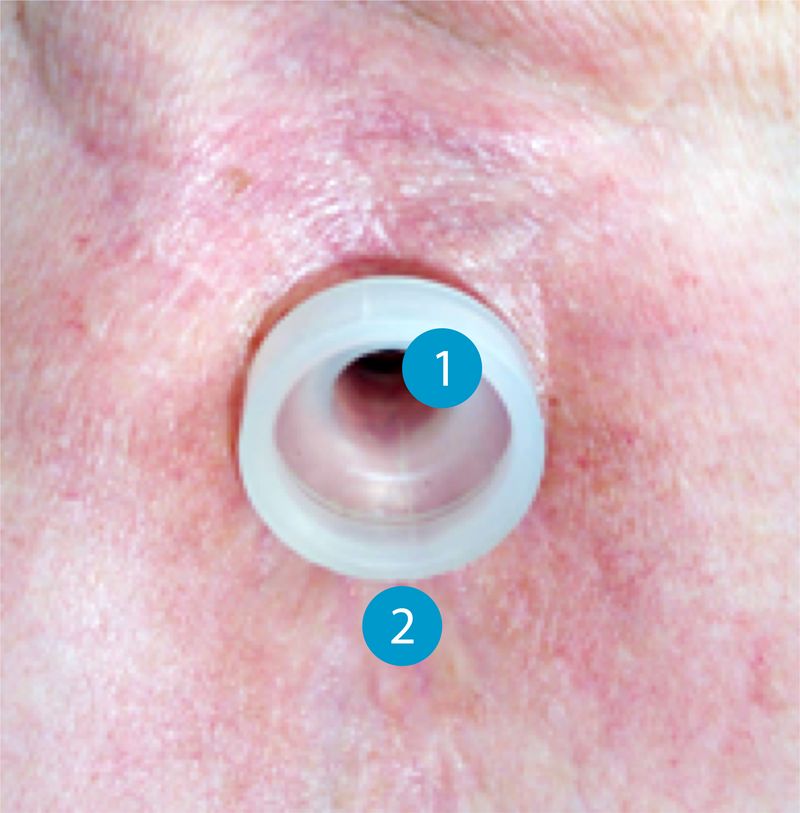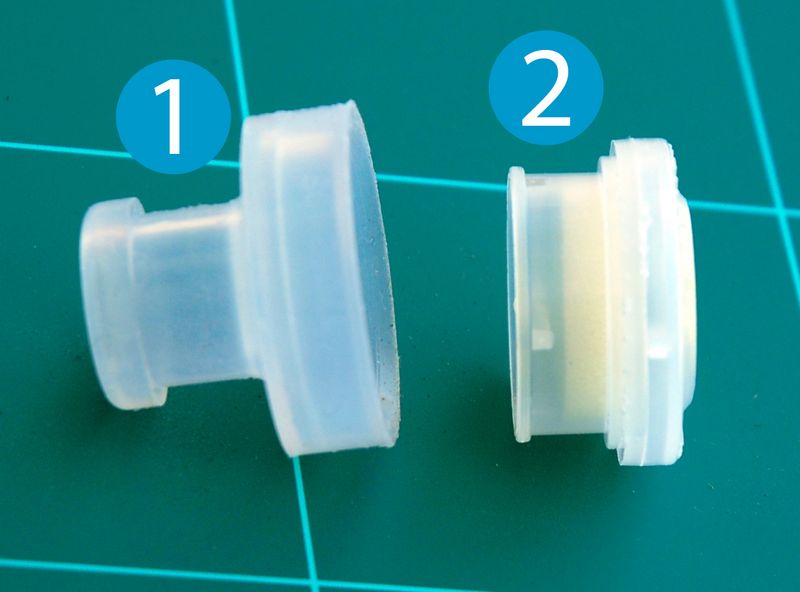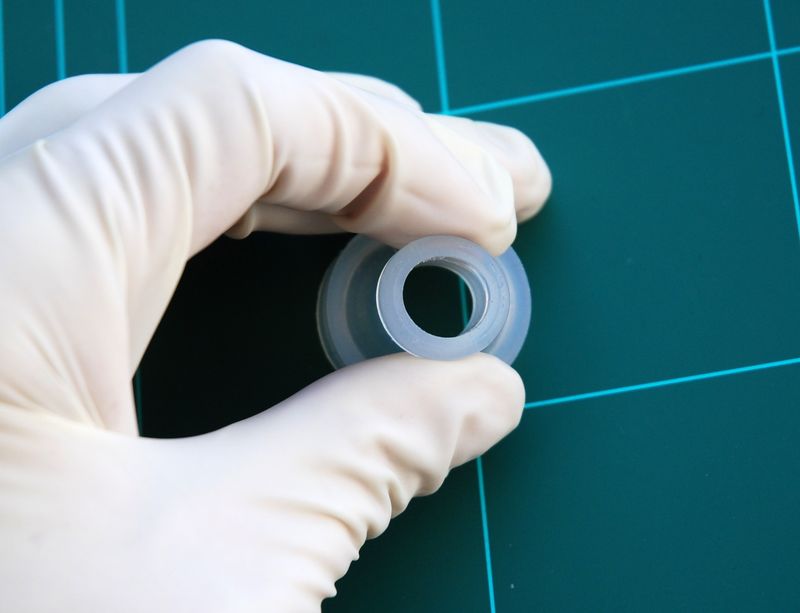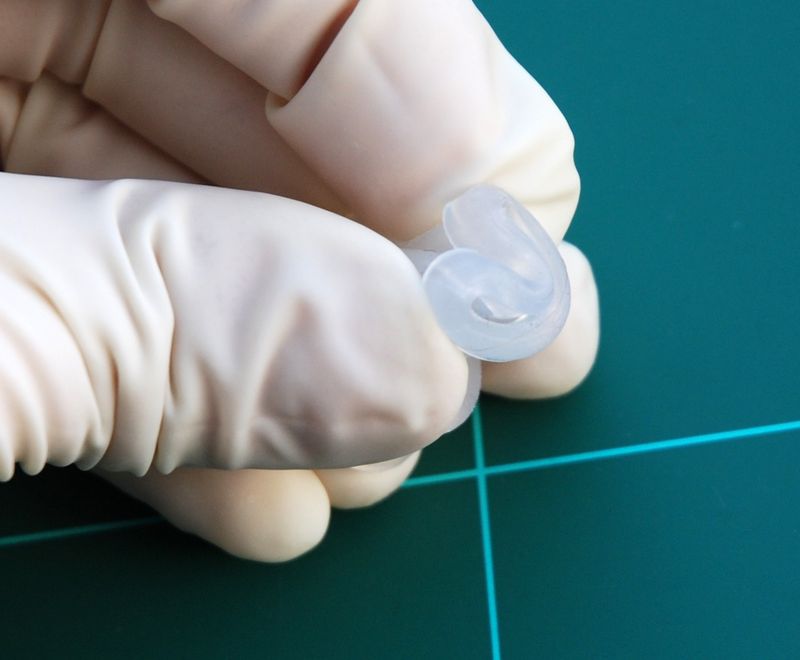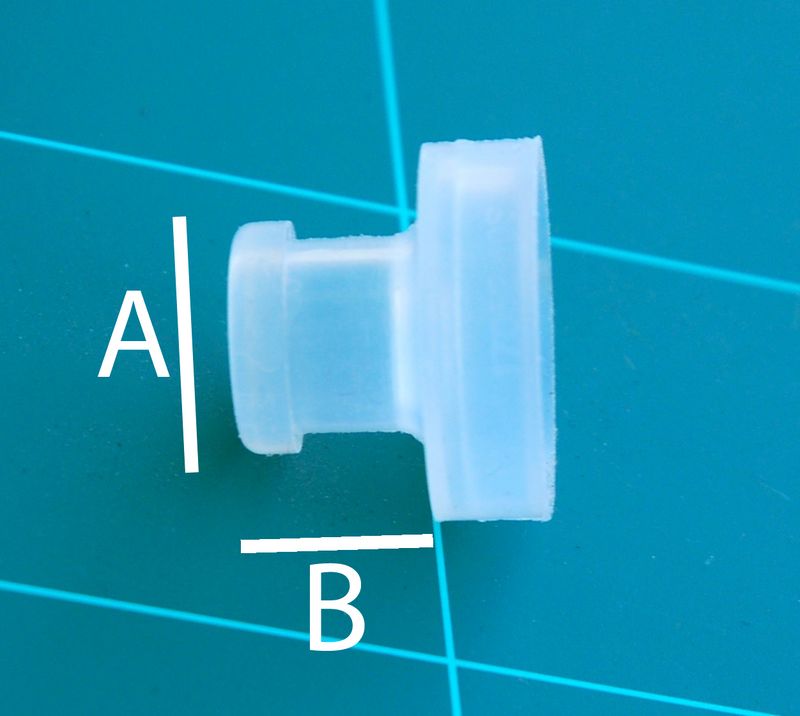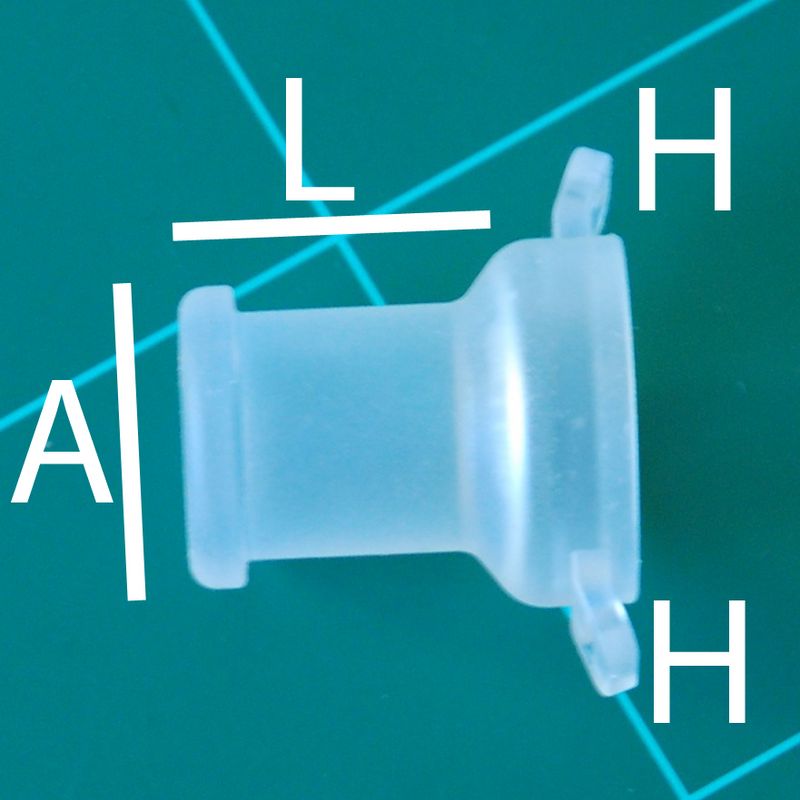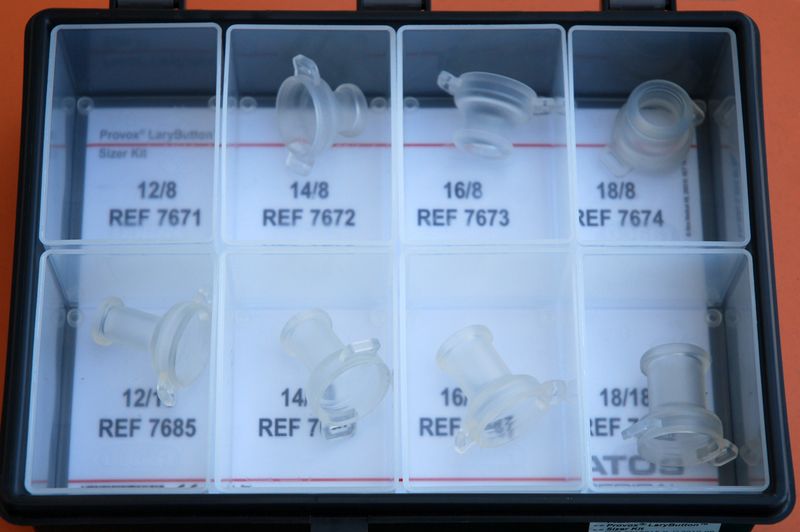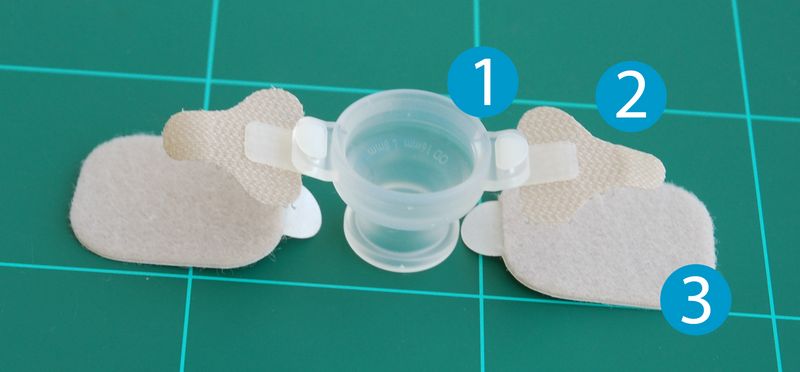Tracheostoma button
A tracheostoma button is an ultra short silicone cannula with a retaining lip. It was developed in the Mayo Clinic, and originally launched on the market as the Barton-Mayo™ tracheostoma button. Today, a selection of different tracheostoma buttons is produced by a large number of manufacturers. A tracheostoma button fits in the entrance to the tracheostoma without any additional fixation, held simply under its own clamping force and by the retaining lip. It prevents stenosis of the entrance to the tracheostoma. It needs to be fitted with absolute precision, as it must not be too tight or too loose. Not every patient can wear a tracheostoma button, as not every tracheostoma provides a good abutment for the retaining lip. If a tracheostoma button can be fitted, it is one of the most elegant and least expensive options for provisions to the tracheostoma, because all the required aids (HME, tracheostoma valve, shower protector etc.) can be attached to it by the 22-mm connector, and it has the advantage of not having to apply adhesive to the skin. A tracheostoma button can be used for several months.
If using the tracheostoma button causes the tracheostoma to widen, this could result in the tracheostoma button no longer fitting tightly enough to provide a seal. It will fall out when the patient talks or coughs. The solution is then to replace the button temporarily by a tracheostoma plaster. The tracheostoma will then usually shrink a little and the button fit more firmly again. Just how long the tracheostoma takes to shrink (hours to days) varies from patient to patient. Often, it is sufficient to wear a plaster at night instead of the button. Inserting the next size tracheostoma button instead of giving the tracheostoma time to shrink will merely delay the problem.
Inserting the tracheostoma button is easier if it is folded first in order to reduce its diameter. This facilitates atraumatic insertion into the tracheostoma. Once the folded button has been inserted in the tracheostoma, its elastic tension will cause it to unfold. Before removing the button from the tracheostoma, ensure any tracheostoma valves or HME filters have been removed from the button, as they will make it more rigid and tense and prevent it from deforming when removed. The button is then removed from the tracheostoma using a sensitive turning and tilting movement. It is important that the button is removed carefully in order to prevent damaging the skin of the tracheostoma.
NOTE:
Some manufacturers recommend lubricating the button with a tiny amount of olive oil before insertion. However, we advise against this for 2 reasons:
1) silicone absorbs oil like a sponge, swells up and then is quickly destroyed by it;
2) as yet, there has been no medical research into the use of oil in the wind pipe, so it is not yet known whether there are any possible risks associated with it.
As it is extremely important that the exact size of the tracheostoma button be established but it is often difficult to estimate, one proven method is to keep a supply of test buttons of different sizes to try.
Gauthier Barton-Mayo Tracheostoma Button™
The silicone of the original Gauthier Barton-Mayo Tracheostoma Button™ (manufacturer NET Work Medical Products England) is very rigid, as it is the tension of the silicone tube that holds it in the tracheostoma. The manufacturer recommends sterilizing the button before it is used.
Table of sizes of Barton-Mayo™ tracheostoma buttons
| Size | Outer diameter | Length in mm |
|---|---|---|
| 9 | 13,5 | 15 short |
| 9 | 13,5 | 22 medium |
| 9 | 13,5 | 30 long |
| 10 | 15 | 15 short |
| 10 | 15 | 22 medium |
| 10 | 15 | 30 long |
| 12 | 17 | 15 short |
| 12 | 17 | 22 medium |
| 12 | 17 | 30 long |
| 14 | 19 | 15 short |
| 14 | 19 | 22 medium |
| 14 | 19 | 30 long |
Provox® LaryButton™
One structural development of the Barton-Mayo™ button is the Provox® Lary Button™. It has additional retaining eyelets (H) on the sides to aid the attachment of a collar or of the Provox LaryClips to securely fasten the button. The LaryButton™ is available in 2 lengths (8 mm and 18 mm) and 4 diameters (12 mm, 14 mm, 16 mm and 18 mm). The silicone of the LaryButton™ is much softer than that of the Barton-Mayo™ button. The manufacturer gives the maximum lifespan of a LaryButton™ as 6 months. LaryButtons™ can be sterilized. A LaryButton™ can only be used on one patient.
Table of sizes for Provox® LaryButtons™
| Size | Outer diameter in mm (A) | Length in mm (L) |
|---|---|---|
| 12/8 | 12 | 8 |
| 14/8 | 14 | 8 |
| 16/8 | 16 | 8 |
| 18/8 | 18 | 8 |
| 12/18 | 12 | 18 |
| 14/18 | 14 | 18 |
| 16/18 | 16 | 18 |
| 16/18 | 18 | 18 |
A selection of LaryButtons™ in every available length and diameter makes it much easier to fit them.
The LaryButton™ can be attached by the traditional collar or by LaryClips. A LaryClip consists of a hook with a Velcro fastening. The hook (1) is hooked into the eyelet of the LaryButton™, and then secured by its Velcro fastening (2) to an adhesive strip (3). The advantage of the LaryClip over a collar is the absolute flexibility of attachment, even at an angle.

